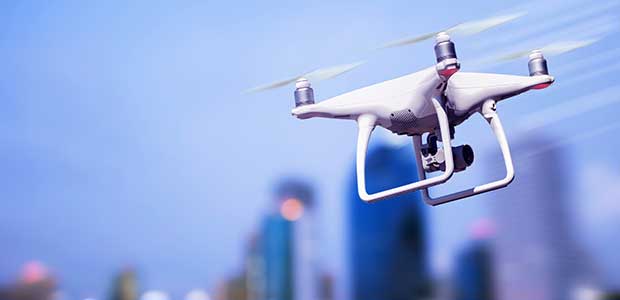
Drone Distribution of Sterile Mosquitoes Successfully Tested
"The release mechanism for mosquitoes has until now been a bottleneck in the application of SIT to control human diseases," said Jeremy Bouyer, medical entomologist at the Joint FAO/IAEA Division of Nuclear Techniques in Food and Agriculture. "The use of drones is a breakthrough and paves the way for large-scale and cost-efficient releases, also over densely populated areas."
The International Atomic Energy Agency announced that it and its partners have successfully tested releasing sterile mosquitoes from drones as a method that could help to suppress the insects that spread Zika and other diseases. IAEA partnered with the Food and Agriculture Organization of the United Nations and has worked with the Swiss-American non-profit group WeRobotics for the past year to develop a drone-based mosquito release mechanism to apply the Sterile Insect Technique to control insect pests, with testing of the system done in Brazil during March 2018.
The method uses radiation to sterilize male mosquitoes that are then released to mate with wild females. This causes the insect population to decline over time. "The release mechanism for mosquitoes has until now been a bottleneck in the application of SIT to control human diseases," said Jeremy Bouyer, medical entomologist at the Joint FAO/IAEA Division of Nuclear Techniques in Food and Agriculture. "The use of drones is a breakthrough and paves the way for large-scale and cost-efficient releases, also over densely populated areas."
The technique requires the uniform release of large numbers of insects in good condition over a given area. Aedes mosquitoes, which are responsible for the spread of diseases, do not disperse for more than 100 meters in their lifetime, and this creates a challenge for the effective application of SIT over large areas. They are also fragile, so high-altitude releases by airplanes – often used in the application of the technique for other insects – may damage their wings and legs.
"The biggest challenge in designing this mechanism was keeping the mosquitoes healthy and competitive while transporting and releasing them at cool temperatures," said Adam Klaptocz, co-founder of WeRobotics. "We're pleased with initial tests that show less than 10 percent mortality through the entire chilling, transport, and aerial release process."
IAEA and its partners are working to reduce the drone's weight and to increase its capacity to carry up to 150,000 mosquitoes per flight. The development of the drone was supported by a grant from the U.S. Agency for International Development.